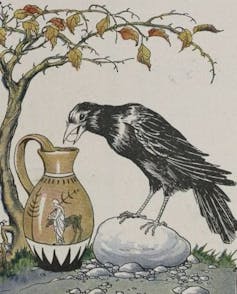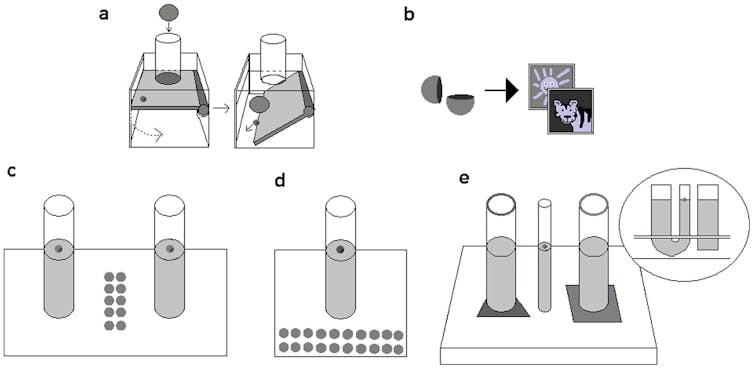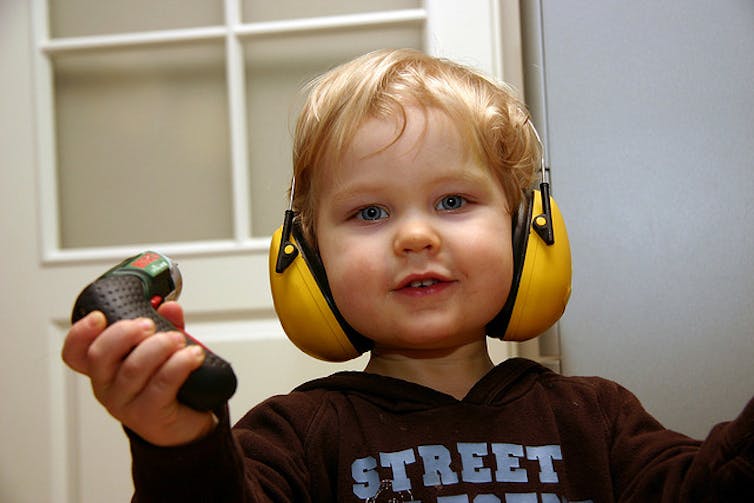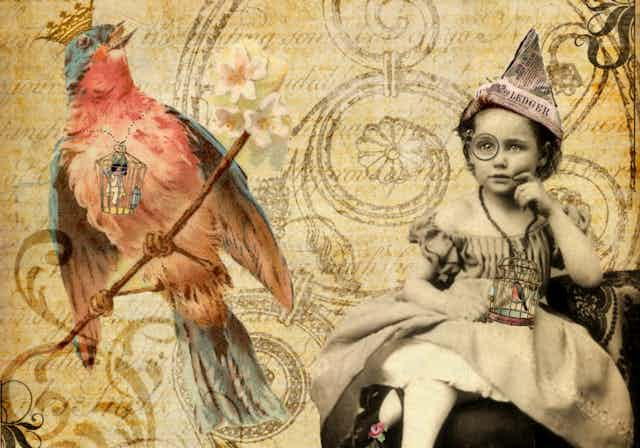Humans are very good at innovating and it would seem reasonable to expect our children would be too. But a recent study questions these assumptions, suggesting young children’s ability to problem-solve is surpassed by birds.
When primatologist Jane Goodall first reported that chimpanzees strip leaves from twigs to fish for termites, archaeologist Louis Leakey famously responded: “Now we must redefine tool, redefine Man, or accept chimpanzees as humans”. Certainly, we can no longer lay claim to the title of the planet’s only tool-making animal.
Yet we remain without peer when one considers the depth, breadth, and inventiveness of our tool use.
There is every reason to believe that chimpanzees living 200 years ago stripped leaves from twigs, much as they do today. We, in contrast, have gone from building buggies for our horses to vehicles with an output roughly equivalent to that of 1,000 horses.
The Crow and the Pitcher
Imagine you are incredibly thirsty and you stumble across a pitcher of water, only to discover that the little water left at the bottom can’t be reached. What would you do?

This problem was famously played out in one of Aesop’s fables The Crow and the Pitcher. The protagonist, a crow, worked out the solution: drop stones into the pitcher until the water rises high enough to be drunk.
As it turns out, corvids (the family crows belong to) can and will do this if presented with an analogous problem. Rooks will drop stones into a thin perspex container, partially filled with water, in order to raise the level enough to retrieve a floating worm – although their behaviour in this scenario seems likely driven by [instrumental learning](http://ikt.hia.no/josejg/Papers/Modeling%20Instrumental%20Conditioning%20(HICSS'36%20paper.pdf) (learning that performance of particular actions increases the probability of a reward) rather than any deeper insight.
When presented with this problem, chimpanzees, our closest living animal relative, can work out a solution too.
Given evidence that the mental abilities of young children and chimpanzees are similar, one would expect our offspring to master this test with ease. But they don’t.
Fable or truth?
In a study recently published in PLoS ONE, Cambridge PhD student of Experimental Psychology Lucy Cheke and her colleagues presented children aged between four and ten years with a series of tasks that required objects to be dropped into tubes of water to raise a floating object high enough to be retrieved.

In one task the children could choose to drop marbles into a tube of water or a tube of sawdust, both containing a token that could be exchanged for a sticker.
A second task presented children with one tube and a choice between two items to drop in – cork balls (which float and hence wont displace any water) or marbles. The third involved a complex u-shaped apparatus designed to obscure the way dropping items into the tube works to raise the water level.
Across these tasks a general pattern emerged. Whereas eight-year-olds generally worked out the solution straight away, children aged between five and seven years only learnt the correct response gradually over a number of repeated trials.
More alarmingly, four-year-olds never learnt the solution. When tested on the exact same task this puts the performance of the five to seven-year-olds at equivalence with Eurasian Jays and New Caledonian Crows – and four-year-olds doing worse!

This pattern of preschoolers doing poorly on such tasks is reflected in other research showing that, unlike corvids, young children can’t work out to bend a pipe-cleaner into a hook in order to pull an item out of a tube.
To put it another way, the capacity of young children to recognise solutions to novel problems seems outstripped by our hairier cousins and some birdbrains.
The faithful copycat
So why do children perform so poorly? One possible reason is that, when confronted with an adult who presents a problem to be solved, it is not in the nature of our children to develop a solution themselves. Rather, they expect to be taught – and then copy.
Indeed, children will copy with such devotion to replication fidelity that, in what has come to be known as overimitation, children will reproduce causally redundant and ineffective actions used by an adult when achieving a specific outcome.
This is the case even if such actions compromise success, something that appears to be culturally universal.
Work in my lab recently documented how four-year-olds who couldn’t work out a version of the tube task described already were immediately able to do so following an adult’s demonstration – but they would copy exactly, even if the modelled method was inefficient.
At first glance, copying another’s obviously redundant actions seems maladaptive. It will extend the time taken to complete the task, possibly distract attention away from relevant components and may limit the extent to which anything learnt can be adapted to other situations and/ or objects.
But when one considers how children grow up in environments saturated with tools and objects they must learn to use, the value of high fidelity copying becomes clearer. As is the case with many cultural forms and skills, our tools and objects often lack perceptual information about the goal(s) for which they are being used.
That is, their uses are cognitively “opaque”, making it challenging for novices to identify which actions or behaviours are relevant and which are incidental.

Adopting a strategy based around exact copying may have fewer costs than attempting to selectively choose relevant components. Omitting a step in the process of preparing food, because it seems arbitrary, risks severe outcomes should the function of that step be to remove toxins.
It is part of human nature to faithfully copy the acts of other humans. This might get in the way of innovative behaviour in our young, but it also lays the foundation for the acquisition of a vast array of skills and behaviours that no individual would ever invent in his or her lifetime.
So on certain tasks the capacity of our young children to use their own insight to reach task solutions is outstripped by a grim and ominous creature, the raven. But while these birds might be born capable of flight they’ll never build a machine that can go from zero to 60kph in 2.6 seconds.
Now that’s flying!

